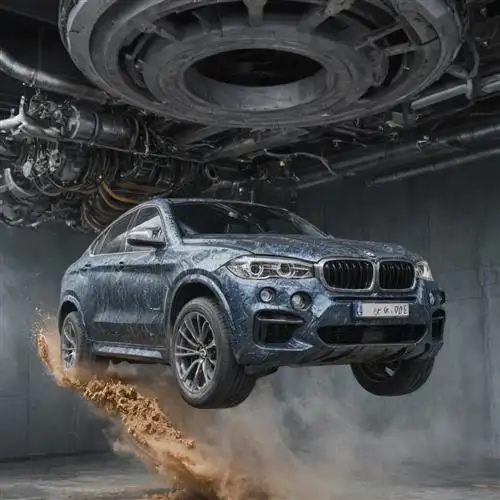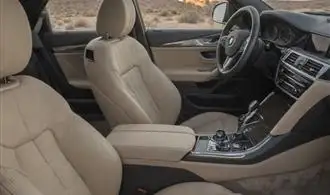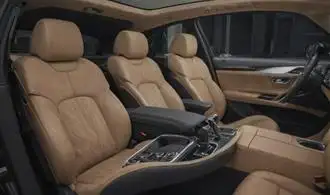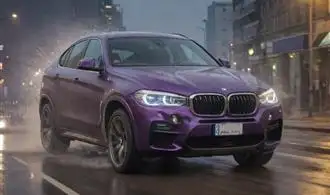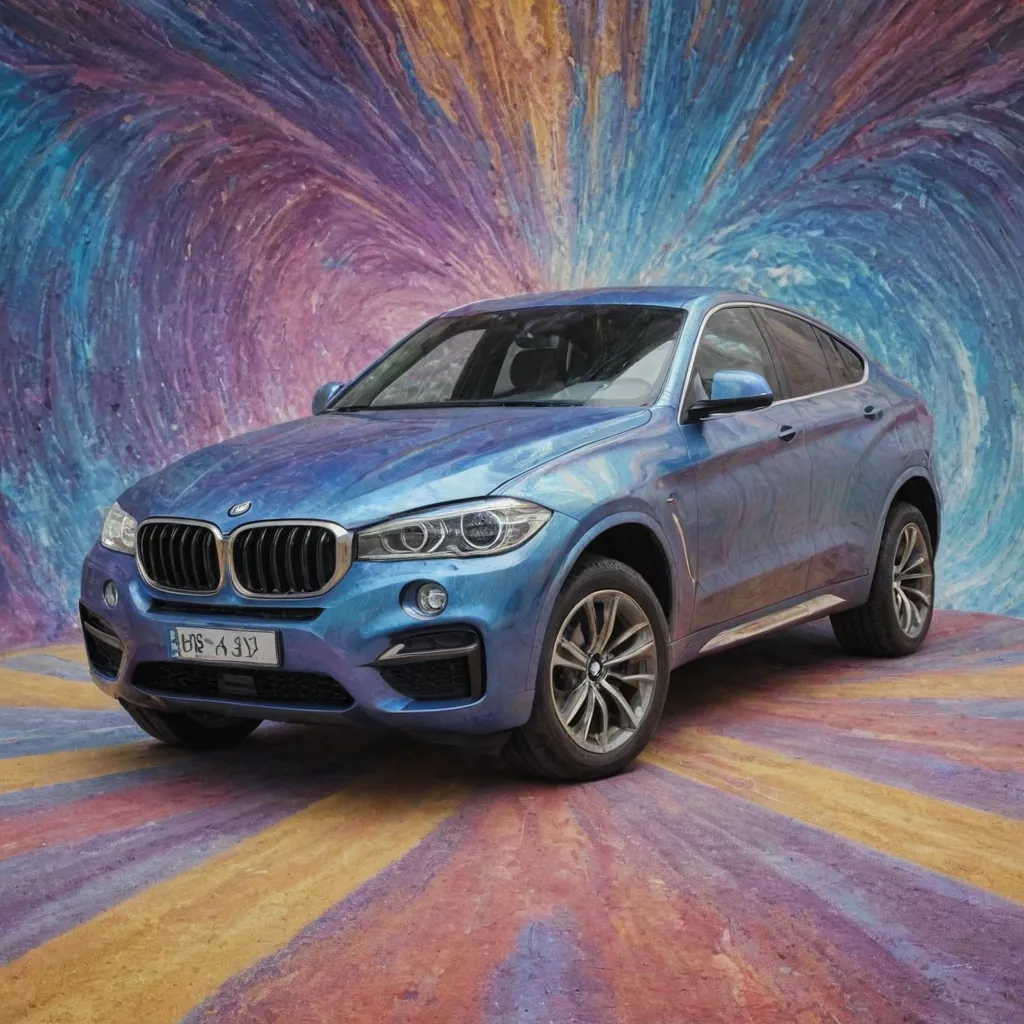
The Controversial Design of the BMW X6
The BMW X6 has been a polarizing vehicle since its introduction in 2008. The unusual coupe-like design of this luxury crossover SUV has been both praised and criticized by automotive enthusiasts and the general public alike. At the heart of this controversy lies the inherent tension between form and function, as the X6 attempts to balance style and practicality in a way that challenges traditional SUV design.
One of the most contentious aspects of the BMW X6's design is its sloping roofline. This distinctive feature, which gives the vehicle a sleek, sporty appearance, comes at the expense of rear headroom and cargo space. Proponents of the design argue that the coupe-like silhouette adds a sense of elegance and dynamism to the SUV, while critics contend that it compromises the vehicle's utility and functionality.
Another point of debate is the X6's front-end styling. The large, imposing kidney grille and aggressive, angular headlights have become a signature design element of the BMW brand. However, some perceive this design as overly bold and confrontational, detracting from the overall aesthetic appeal of the vehicle.
The BMW X6's distinctive appearance is further accentuated by its muscular, wide-body proportions. This design choice, which is intended to convey a sense of power and confidence, has been praised for its bold, attention-grabbing styling. Yet, it has also been criticized for sacrificing agility and maneuverability in favor of a more imposing presence on the road.
Balancing Function and Form in the X6 Design
The BMW X6 is a unique blend of form and function, crafted to deliver a captivating driving experience while maintaining the practicality of an SUV. As a flagship model, the X6 design team faced the challenge of striking a delicate balance between the vehicle's aesthetic appeal and its core purpose of providing a comfortable, capable, and efficient ride.
At the heart of the X6 design philosophy lies a deep understanding of the target audience. These are individuals who seek a vehicle that not only turns heads but also performs exceptionally well on the road. The design team recognized the need to create a striking silhouette that would instantly capture the attention of onlookers, while simultaneously ensuring the X6 remains true to its functional roots.
One of the key design elements that exemplifies this balance is the vehicle's distinctive coupe-like roofline. This sleek and aerodynamic profile not only enhances the X6's visual appeal but also contributes to its improved fuel efficiency and handling characteristics. The team carefully considered the impact of this design choice, ensuring it did not compromise the interior space or the vehicle's overall utility.
Another notable aspect of the X6 design is the seamless integration of technology and functionality. The interior of the vehicle is a harmonious blend of luxurious materials, intuitive controls, and advanced features that cater to the needs of the modern driver. From the well-crafted dashboard to the ergonomic seating, every element is designed to provide a comfortable and engaging driving experience.
The exterior of the X6 also showcases the design team's attention to detail. The sculpted body lines, the bold kidney grille, and the distinctive LED lighting signatures all contribute to the vehicle's striking presence on the road. These design elements not only enhance the X6's aesthetic appeal but also serve practical purposes, such as improved aerodynamics and enhanced visibility.
Embracing the Unconventional in BMW X6 Design
The BMW X6 is a vehicle that defies convention, challenging the traditional SUV mold with its coupe-like silhouette and bold, commanding presence. For designers tasked with shaping this innovative model, embracing the unconventional is not just a choice – it's a necessity. In this exploration, we delve into the mindset and approaches that have allowed the BMW X6 to stand out in a crowded market, captivating enthusiasts and pushing the boundaries of automotive design.
At the heart of the BMW X6's design philosophy lies a willingness to take risks and challenge the status quo. The team behind this model recognized that conformity would only result in a forgettable product, unable to leave a lasting impression on the discerning consumer. Instead, they embraced a design language that is unapologetically distinctive, blending the utility of an SUV with the sleek, dynamic lines typically associated with coupes.
This commitment to the unconventional manifests in various design elements. The coupe-inspired roofline, for instance, is a bold departure from the traditional square-backed SUV profile, lending the X6 a sense of graceful athleticism. The sculpted bodywork, with its muscular fenders and sweeping contours, creates an impression of power and refinement that challenges the conventional notions of what an SUV should look like.
Equally striking is the BMW X6's front-end design, which features a prominent, almost imposing kidney grille that commands attention. This design choice, while divisive among some purists, reflects the brand's willingness to push the boundaries and create a unique visual identity for the vehicle. The integrated headlight units, with their sleek, modern styling, further contribute to the X6's distinctive appearance, setting it apart from its more conventional competitors.
Beneath the surface, the design team's embrace of the unconventional is evident in the thoughtful integration of technology and functionality. The X6's interior, for example, seamlessly blends luxurious materials and cutting-edge features, creating a cabin that is both visually striking and highly practical. The use of premium leather, metal accents, and avant-garde design elements lend the X6 a sense of sophistication, while the intuitive infotainment system and advanced driver assistance technologies ensure a thoroughly modern and engaging driving experience.
Pushing the Boundaries of Automotive Design with the X6
The BMW X6 has long been a symbol of the brand's commitment to pushing the boundaries of automotive design. From its bold and distinctive silhouette to its innovative features, the X6 has consistently challenged the status quo and redefined what's possible in the world of luxury crossover SUVs.
At the heart of the X6's design philosophy lies a relentless pursuit of balance. The vehicle's coupe-like roofline and muscular proportions create a striking visual statement, while its athletic stance and dynamic handling capabilities ensure a thrilling driving experience. This harmonious blend of form and function is a hallmark of BMW's design ethos, and the X6 exemplifies it perfectly.
One of the key design elements that sets the X6 apart is its bold and unapologetic exterior. The signature kidney grille, a BMW design cue, has been reimagined and enlarged, giving the front end a dominant and imposing presence. The sleek, sloping roofline and the sharply angled rear hatch contribute to the vehicle's sporty and aerodynamic appearance, while the wide stance and flared wheel arches convey a sense of power and stability.
But the X6's design isn't just about aesthetics. It's also a testament to the brand's commitment to functionality and innovation. The vehicle's interior is a masterclass in ergonomics and craftsmanship, with premium materials, intuitive controls, and a focus on driver-centric design. From the supportive and adjustable seats to the advanced infotainment system, every aspect of the X6's cabin has been meticulously designed to enhance the driving experience.
Moreover, the X6's design is not merely a static expression of the brand's design philosophy. It's a dynamic canvas that BMW's designers continually refine and evolve. With each new generation, the X6 showcases the brand's ability to adapt to changing market trends and customer preferences, while remaining true to its core identity.


